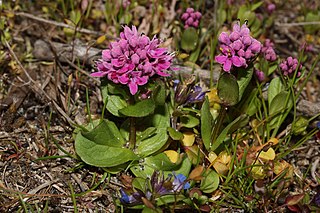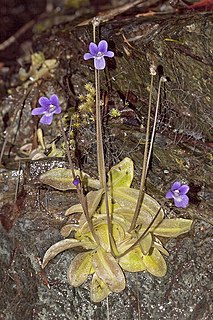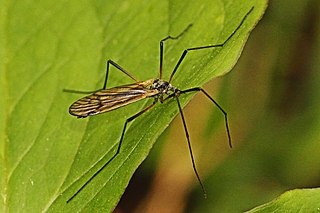
Limnophila aromatica, the rice paddy herb, is a tropical flowering plant in the family Plantaginaceae. It is native to Southeast Asia, where it flourishes in hot temperatures and grows most often in watery environments, particularly in flooded rice fields. It is called ngò ôm or ngò om or ngổ in Vietnam and used as an herb and also cultivated for use as an aquarium plant. The plant was introduced to North America in the 1970s due to Vietnamese immigration following the Vietnam War. It is called "ma om" (ម្អម) in Khmer. It is used in traditional Cambodian soup dishes and Southern Vietnamese cuisine. It can grow in flooded rice paddies during wet season but it grows best on drained but still wet sandy soil of harvested rice paddies for a few months after the rainy season ended. It dies out soon after it flowers. Rural Cambodians often harvest them and put them on the roof of their houses to dry for later use.

Limnophila sessiliflora, known as dwarf ambulia, ambulis, and Asian marshweed is a flowering plant in the family Plantaginaceae.

Plectritis is a genus of plants in the honeysuckle family (Caprifoliaceae). There are only three to five species. They are known generally as seablushes, and they are native to western North America and Chile. These are unassuming annual plants with thin, erect stems with few leaves and bearing a terminal inflorescence of flowers. The flower head bears several tiny flowers in shades of pink or white.

Limnophila is a genus of flowering plants in the family Plantaginaceae. It is distributed in tropical and subtropical regions of Africa, Asia, Australia, and the Pacific Islands. Species are known commonly as marshweeds.

Limnophila is a genus of limoniid crane flies in the family Limoniidae. There are at least 280 described species in Limnophila.
L. japonica may refer to:

Pinguicula macroceras, the California butterwort or horned butterwort, is a species of perennial carnivorous herb that is native to the North American Pacific coast, as well as other select distributions in Canada, Russia, Japan, and the United States.[3] [7] Common names include California butterwort, horned butterwort and butterwort. Pinguicula macroceras belongs to the genus Pinguicula and the family Lentibulariaceae.

Hexatomini is a tribe of limoniid crane flies in the family Limoniidae. There are about 16 genera and at least 250 described species in Hexatomini.

Limnophila rufibasis is a species of limoniid crane fly in the family Limoniidae.
Limnophila marchandi is a species of limoniid crane fly in the family Limoniidae.
Macrocera formosa is a species of predatory fungus gnats, insects in the family Keroplatidae.

Macrocera is a genus of predatory fungus gnats in the family Keroplatidae. There are at least 190 described species in Macrocera.
Paleoplatyura is a genus of predatory fungus gnats in the family Keroplatidae. There are about seven described species in Paleoplatyura.
Limnophila fuscovaria is a species of limoniid crane fly in the family Limoniidae.
Nephrotoma macrocera is a species of large crane fly in the family Tipulidae.
Limnophila angustula is a species of limoniid crane fly in the family Limoniidae.
Cerotainia macrocera is a species of robber flies in the family Asilidae.
Rhodoluna is a Gram-positive, non-spore-forming and non-motile genus of bacteria from the family of Microbacteriaceae. The type strain of the only species Rhodoluna lacicola encodes an actinorhodopsin, which is a light-diven proton pump enabling light energy conversion, potentially resulting in a mixotrophic physiology. The type strain of R. lacicola was isolated from Lake Tai in China. The type strain MWH-Ta8 is remarkable for its very small cell size ultramicrobacterium and its small genome size of only 1.4 Mbp. The type strain has a planktonic lifestyle, that is freely floating the water column of aquatic systems. Currently, the genus Rhodoluna contains two described species.







